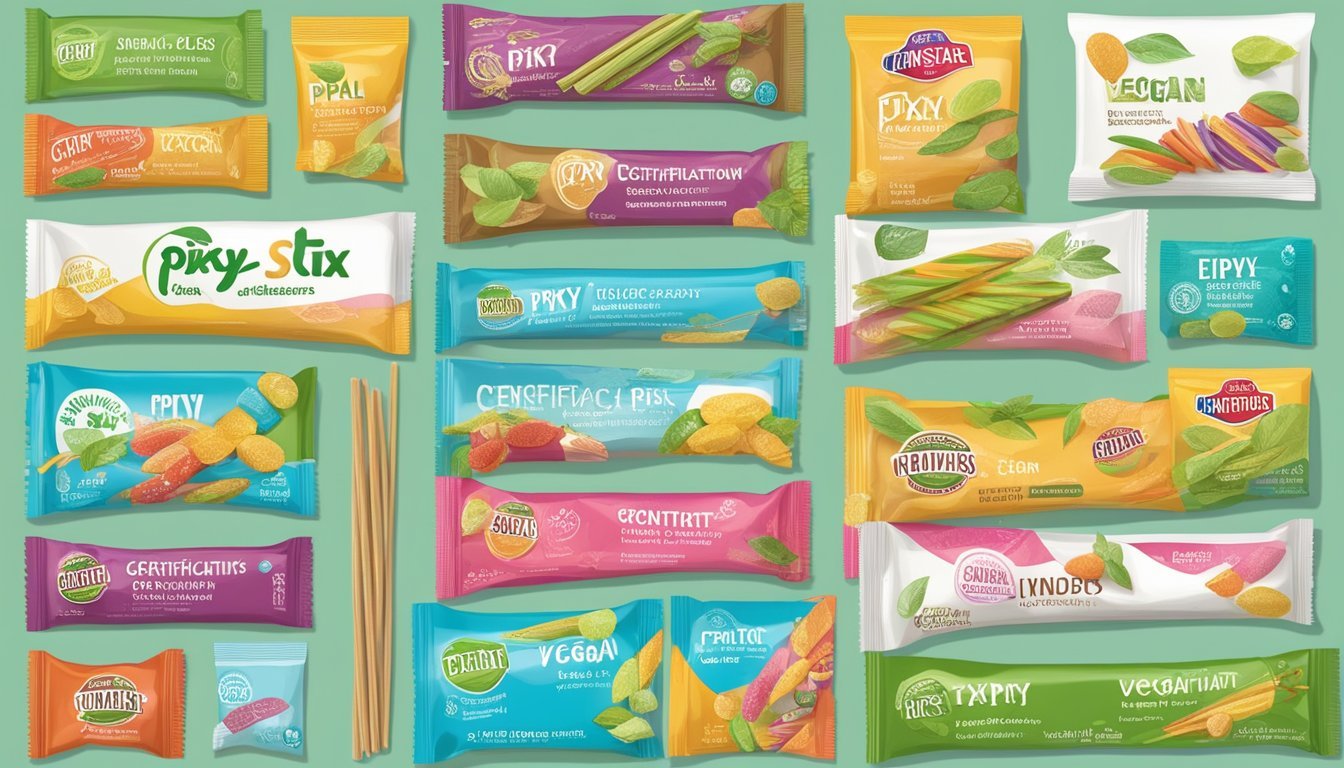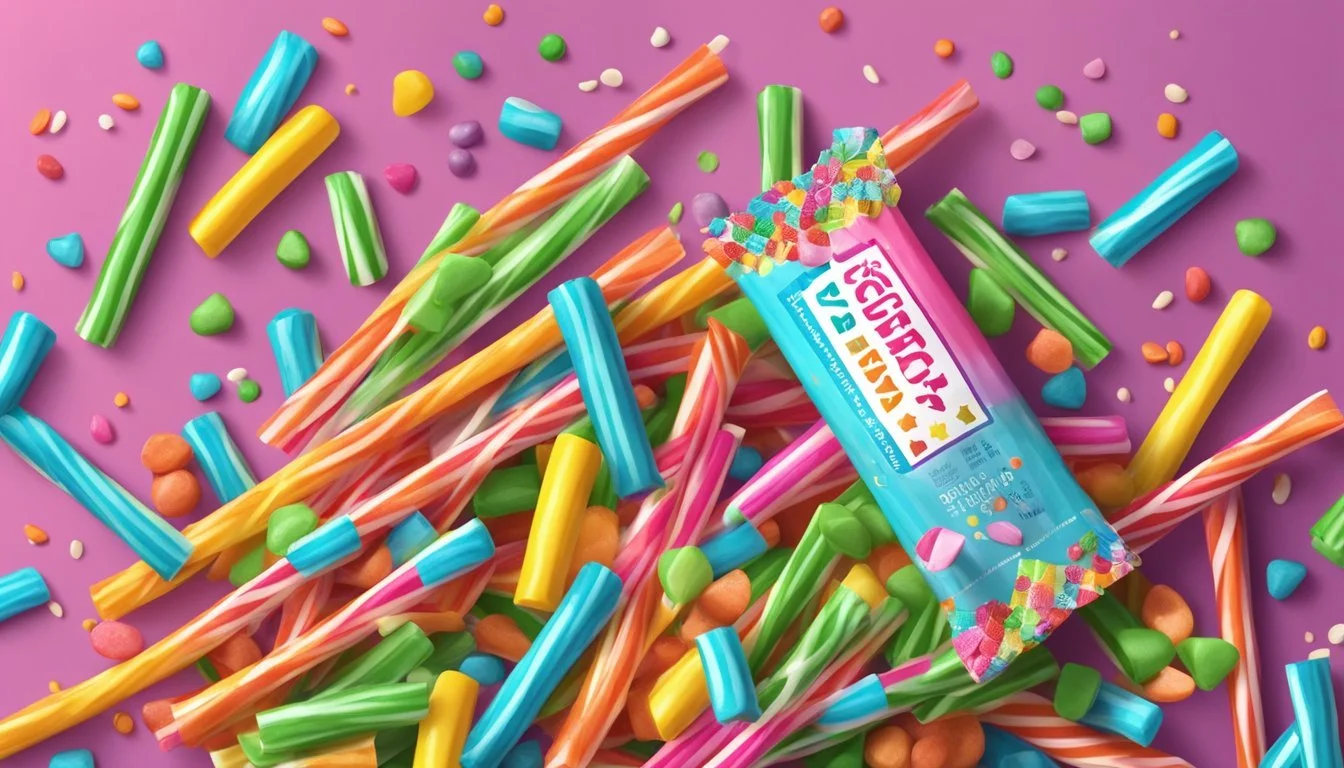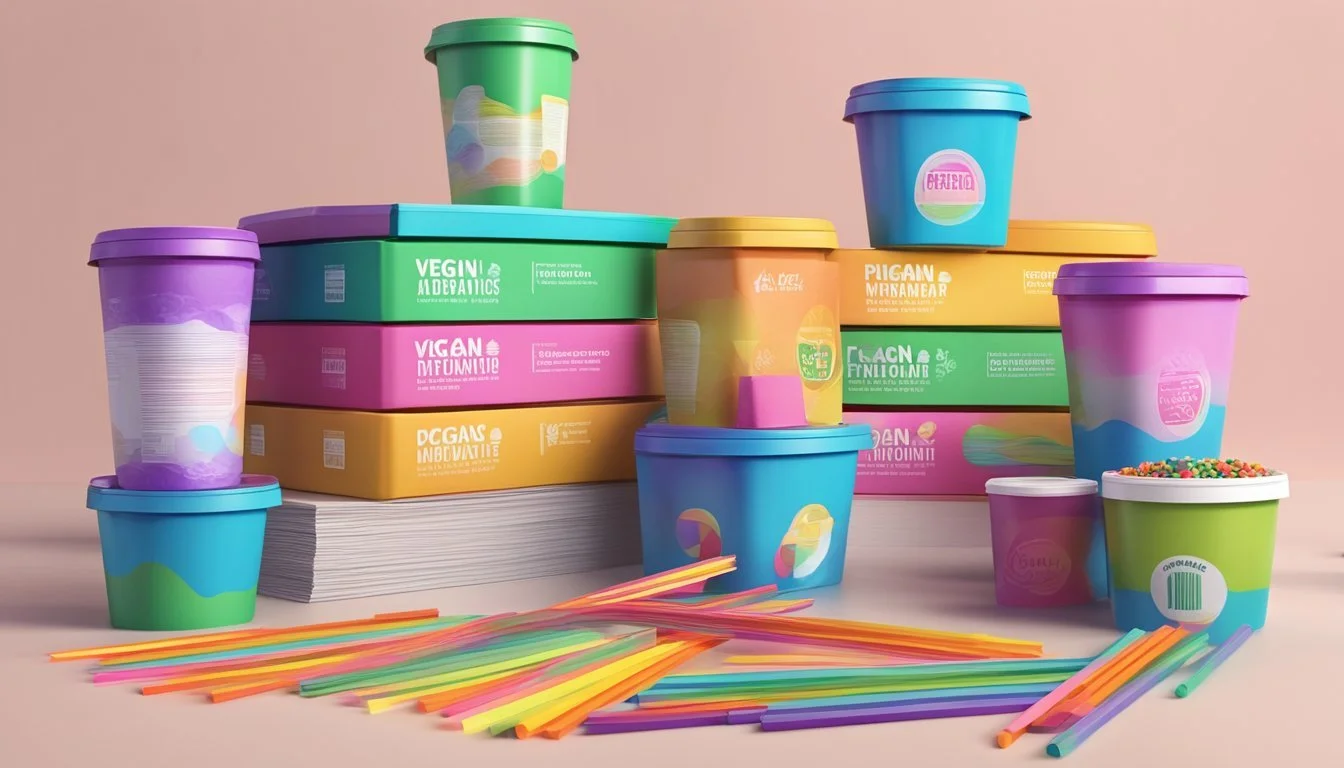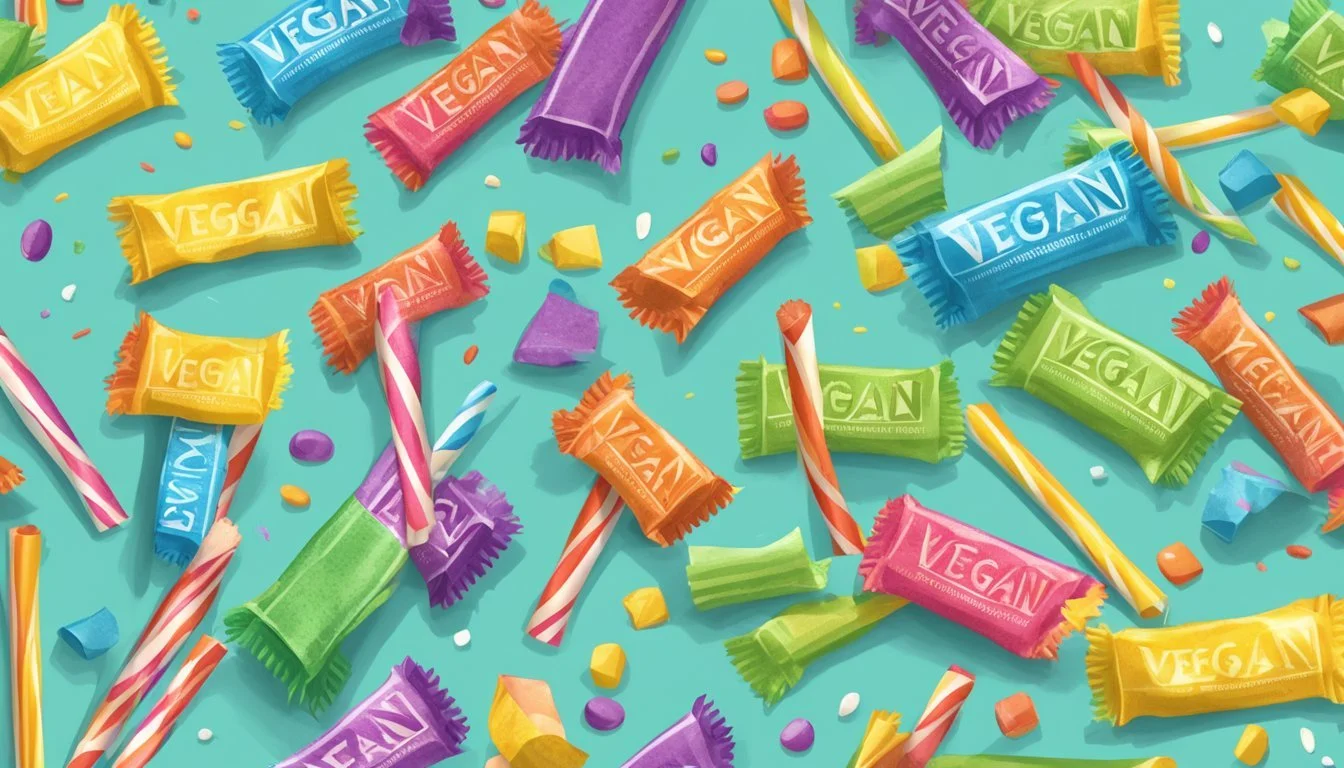Are Pixy Stix Vegan?
Unveiling the Facts on This Classic Candy
When it comes to following a vegan lifestyle, scrutinizing every food item's ingredient list becomes a regular practice. One confectionery item that often raises questions in the vegan community is Pixy Stix. These colorful straws filled with fruity powdered candy are a nostalgic treat for many. Initially, one might assume that a simple sugary product like Pixy Stix would naturally be free from animal derivatives, thus qualifying as vegan-friendly.
However, the vegan status of Pixy Stix isn't as straightforward as it appears. While they do not contain any overt animal products such as milk, eggs, or gelatin, the concern for vegans often lies within the artificial colors and flavors used. These ingredients, while not directly animal-derived, may involve animal testing or other ethical concerns that stricter vegans might find problematic. Each individual's definition of what suits a vegan diet may vary, which is why the vegan categorization of Pixy Stix splits opinions within the community.
Pixy Stix Overview
This section delves into what Pixy Stix are and what they are made of, providing a comprehensive profile of the candy and an analysis of its ingredients.
Candy Profile
Pixy Stix are a popular powdered candy known for their burst of flavor and unique presentation. The candy is usually packed in a paper tube that echoes the look of a straw. They are often found in an assortment of fruit flavors, which include but are not limited to cherry, orange, grape, and blue raspberry.
Ingredients Breakdown
The primary ingredient in Pixy Stix is sugar, which contributes to the candy's sweet taste. The sugar is usually combined with dextrose, another form of sugar, and citric acid, which adds a tartness to balance the sweetness. To create the various flavors of Pixy Stix, artificial flavors are used. The distinct colors correspond with the flavors and are produced using artificial colors. While corn syrup is often found in candies, it is not a listed ingredient for traditional Pixy Stix. Here is a simplified ingredient list:
Sugar
Dextrose
Citric Acid
Artificial Flavors
Artificial Colors
Vegan Diet Fundamentals
In understanding what makes certain foods, such as vegan candy, suitable for a vegan diet, one must first grasp the core principles of veganism and be able to identify common non-vegan ingredients.
Defining Veganism
Veganism is a dietary and lifestyle choice wherein individuals avoid using or consuming animal products and by-products. Adopting veganism typically involves a commitment to avoiding foods like meat, dairy, and eggs, which are derived from animals. Vegans extend this principle to all aspects of life, including clothing and other products, but for the scope of this section, the focus is on vegan diets. Vegans opt for plant-based alternatives and foods that do not involve animal exploitation or cruelty.
Common Non-Vegan Ingredients
There are numerous ingredients commonly found in foods and candies which are not vegan. Here are some of the key non-vegan ingredients to look out for:
Dairy products: Milk and milk derivatives are commonly found in many candies and chocolate bars.
Eggs: Often used in baked goods and some confectionery.
Gelatin: A gelling agent derived from animal collagen, frequently used in gummy candies and marshmallows.
Shellac: Produced from the secretion of lac bugs, this substance is used as a coating for various types of candy.
Carmine: Also known as cochineal, this red dye is made from crushed insects and is found in some red or pink colored candies.
Individuals following a vegan diet meticulously check ingredient lists to ensure that none of these animal-derived elements are present, and they often seek out certified vegan products to ensure compliance with their dietary choices. Vegan candy, to be considered truly vegan, should not contain any of these common non-vegan ingredients.
Candy Comparison
When examining whether Pixy Stix are vegan, it's informative to compare them with other popular candies which may or may not be suitable for vegans.
Pixy Stix Vs. Other Candies
Pixy Stix are a candy known for their powdered sugar content, housed in a small, straw-like wrapper. They differ from many candies as they do not contain gelatin or other obvious animal products, which are common non-vegan ingredients in gummies like Sour Patch Kids and Swedish Fish. However, Pixy Stix may contain artificial colors such as Blue 1 Lake and Red 40 Lake, which are controversial among vegans due to potential animal testing.
In contrast, candies such as Nerds, Fun Dip, and Airheads are generally considered vegan-friendly, as they avoid ingredients directly derived from animals. Others like Twizzlers and Jolly Rancher lollipops also tend to be vegan, but it's always advisable to check the latest ingredient labels as formulations can change.
Candy Type Vegan-Friendly Status Notes Pixy Stix Potentially Controversial Due to artificial colors Nerds Typically Vegan No animal-derived ingredients Twizzlers Typically Vegan Gelatin-free Jolly Rancher Lollipops Typically Vegan Gelatin-free
Vegan-Friendly Alternatives
While Pixy Stix may raise some concerns for the strictest vegans, numerous alternatives are widely available that avoid any ingredients in question. Smarties (U.S. brand), for example, are a well-known vegan candy, free of animal byproducts and artificial colors that can raise ethical questions. Other candies like Skittles, which once contained gelatin, have since altered their recipe to become fully vegan.
Some vegan-friendly alternatives to Pixy Stix and other more controversial candies include:
Smarties: Clear of any animal-derived ingredients and problematic artificial colors.
Skittles: Now gelatin-free, these fruit-flavored candies are suitable for vegans.
Blow Pops: These contain no gelatin, but vegans should be cautious of artificial colors.
Now and Later: The original flavor is vegan, but the chewy variant contains egg whites, making it unsuitable for vegans.
It should be noted that while a candy may be vegan, it might not align with other dietary preferences or restrictions, such as organic or non-GMO standards. Consumers should verify each product's ingredients based on their individual vegan guidelines.
Health and Nutrition
When considering Pixy Stix in terms of health and nutrition, it's essential to recognize that while they are a sugar-based candy and offer minimal nutritional benefits, they align with vegan principles by being free of animal-derived ingredients.
Nutritional Value
Pixy Stix consist primarily of sugar and contain artificial flavors and colors. They offer no significant nutritional value, as they lack protein, fiber, and other essential nutrients. Each serving is high in sugar, which should be consumed in moderation in line with dietary guidelines.
Calories: The caloric content is derived almost exclusively from sugars.
Sugar: As a candy, they are predominantly composed of this ingredient.
Protein: They contain no protein.
Vegan: Pixy Stix are considered vegan because they don't contain animal-derived ingredients.
Diet and Candy Consumption
In the context of a balanced diet, consuming candies like Pixy Stix should be done sparingly, as they are high in sugar and low in protein and other macronutrients. Individuals adhering to a vegan lifestyle can consume Pixy Stix, as they are animal-free; however, caution is advised due to their high sugar content and lack of nutritional value.
Manufacturing and Ethics
In the examination of Pixy Stix's vegan status, it is crucial to dissect the production process and explore the ethical stances of the manufacturer, particularly in relation to animal testing and the use of particular colorants.
Production Process
Pixy Stix are a powdered candy composed primarily of dextrose and a variety of artificial colors and flavors. Key color additives include Red 40 Lake, Blue 1 Lake, Blue 2 Lake, Yellow 5 Lake, and Yellow 6 Lake. These colorants have been certified by the FDA for use in food products. The manufacturer must ensure that these ingredients are synthesized through processes that do not involve animal-derived substances, such as bones, tendons, or animal testing, to maintain a product that aligns with vegan standards.
Ethical Considerations
Ethical concerns in candy manufacturing may involve testing on animals and the utilization of animal-derived ingredients. Pixy Stix's manufacturer asserts that their products, including Pixy Stix, are not tested on animals, aligning with cruelty-free standards. Moreover, they must avoid ingredients like shellac and carmine, which are common non-vegan additives derived from insects, to appeal to vegan consumers. The conscientious approach towards these ethical considerations is essential for the manufacturer to uphold the integrity of a vegan-friendly label.
Consumer Information
Before delving into the specifics, consumers should note that Pixy Stix is often considered vegan-friendly due to the absence of animal-derived ingredients. However, individual preferences regarding natural flavors and added colors might influence purchase decisions.
Labeling and Packaging
Pixy Stix are distinguished by their iconic cylindrical wrapper. The label on the product states the ingredients, which generally consist of dextrose, citric acid, and less than 2% of natural flavors, along with added colors. Consumers should be aware that the term "natural flavors" can be ambiguous and may not always align with strict vegan standards.
Purchasing Pixy Stix
When purchasing Pixy Stix, individuals looking for vegan-friendly options can typically find these candies widely available in stores and online. They may also be included in lists of vegan-friendly candies due to their lack of overt animal products. However, for those adhering to stricter vegan guidelines, such as those avoiding all forms of potential animal-derived additives, it may be necessary to research or contact the manufacturer regarding the source of natural flavors and colors.
Color Additives and Regulations
In the context of Pixy Stix, a candy renowned for its vibrant colors, it is crucial to understand the significance of colorants and the regulatory framework that governs their use in food products.
Impact of Colorants
Color additives contribute to the visual appeal of foods including candies like Pixy Stix. The colors used, such as Red 40, Blue 1 Lake, Blue 2 Lake, Red 40 Lake, Yellow 5 Lake, and Yellow 6 Lake, are synthetic dyes responsible for the signature shades in cherry and blue raspberry flavors. The appeal of such artificial colors is that they produce a more intense color than most natural colorants.
FDA Regulations
The Food and Drug Administration (FDA) is the regulatory body that oversees the safety of color additives in the United States. Before any color additive can be used in food, it must be pre-approved by the FDA and listed in color additive regulations. These regulations ensure that products like Pixy Stix, which contain various artificial colors, comply with safety standards.
Key FDA Regulations Include:
Mandatory pre-approval for each color additive.
Listing in the Code of Federal Regulations Title 21, where specific color additivessuch as Red 40 and Yellow 5 are addressed.
FDA compliance is essential for the lawful distribution of foods with artificially colored components. Consumers can reference the FDA's Code of Federal Regulations for detailed information on the use of specific color additives.
Allergens and Dietary Restrictions
In considering whether Pixy Stix are suitable for vegans, it's important to examine the potential presence of allergenic ingredients and the risk of cross-contamination. Individuals with food allergies or strict dietary restrictions must pay careful attention to these details.
Allergenic Ingredients
Pixy Stix are known for being free of common animal-derived ingredients, such as gelatin, milk, dairy, and eggs, which makes them a potential choice for those avoiding animal products. Unlike candy options like Skittles and Twizzlers, which have been known to alter their recipes over time, Pixy Stix have consistently remained devoid of these allergens.
Cross-Contamination Concerns
While Pixy Stix appear to be free of direct animal-derived ingredients, the risk of cross-contamination cannot be overlooked. Manufacturers may produce non-vegan items within the same facilities, which can introduce traces of milk or other allergens into vegan-labeled products. Consumers with severe allergies or those who adhere strictly to vegan principles due to ethical considerations should be aware of this when making their choice.
Cultural and Social Impact
Candy, such as Pixy Stix, plays a notable role in cultural phenomena and social events, influencing popular culture and fostering communal experiences.
Candy in Popular Culture
Candy often appears in various forms of media, reflecting its status within society. Pixy Stix themselves might emerge as a symbol of childhood nostalgia in films or literature. In movies, one might find scenes at a movie theater concession stand where candy is not just a treat but a part of the quintessential cinema experience. The colorful presentation and sweet allure of candies have cemented them as a staple within entertainment and media.
The Role of Candy in Social Events
At social gatherings, candy is frequently a centerpiece for celebrations and ceremonies. It has transcended being mere food, becoming integral to events and rituals. From Halloween to birthday parties, Pixy Stix and similar confections serve as a means for people to connect and share joyous moments. The act of sharing candy, such as chocolate, during Valentine’s Day or holiday festivities highlights its role in expressing affection and fostering a sense of community.
Conclusion
Pixy Stix are largely considered vegan-friendly, as they primarily consist of dextrose, citric acid, and artificial colors and flavors – ingredients without direct animal derivatives. However, certain vegans might dispute their vegan status due to the presence of artificial colors, which potentially involve animal testing, or sugar, which may be processed using bone char from animals, a concern for some individuals adhering to a strict vegan lifestyle.
Vegan Concerns:
Artificial Colors: Potential animal testing
Sugar Processing: Possible use of bone char
Key Points:
Ingredients found in Pixy Stix typically do not originate from animals.
Strict vegan individuals may scrutinize processing methods and secondary implications like animal testing.
Consumers interested in maintaining a vegan diet while enjoying confections like Pixy Stix should assess individual product choices by considering the broader ethical implications beyond the ingredient list. Given the varying degrees of vegan principles, individuals are encouraged to make informed decisions aligned with their personal vegan standards.
Recommendation: Thoroughly research and verify the manufacturing processes of confections to ensure they adhere to one's specific vegan criteria.











